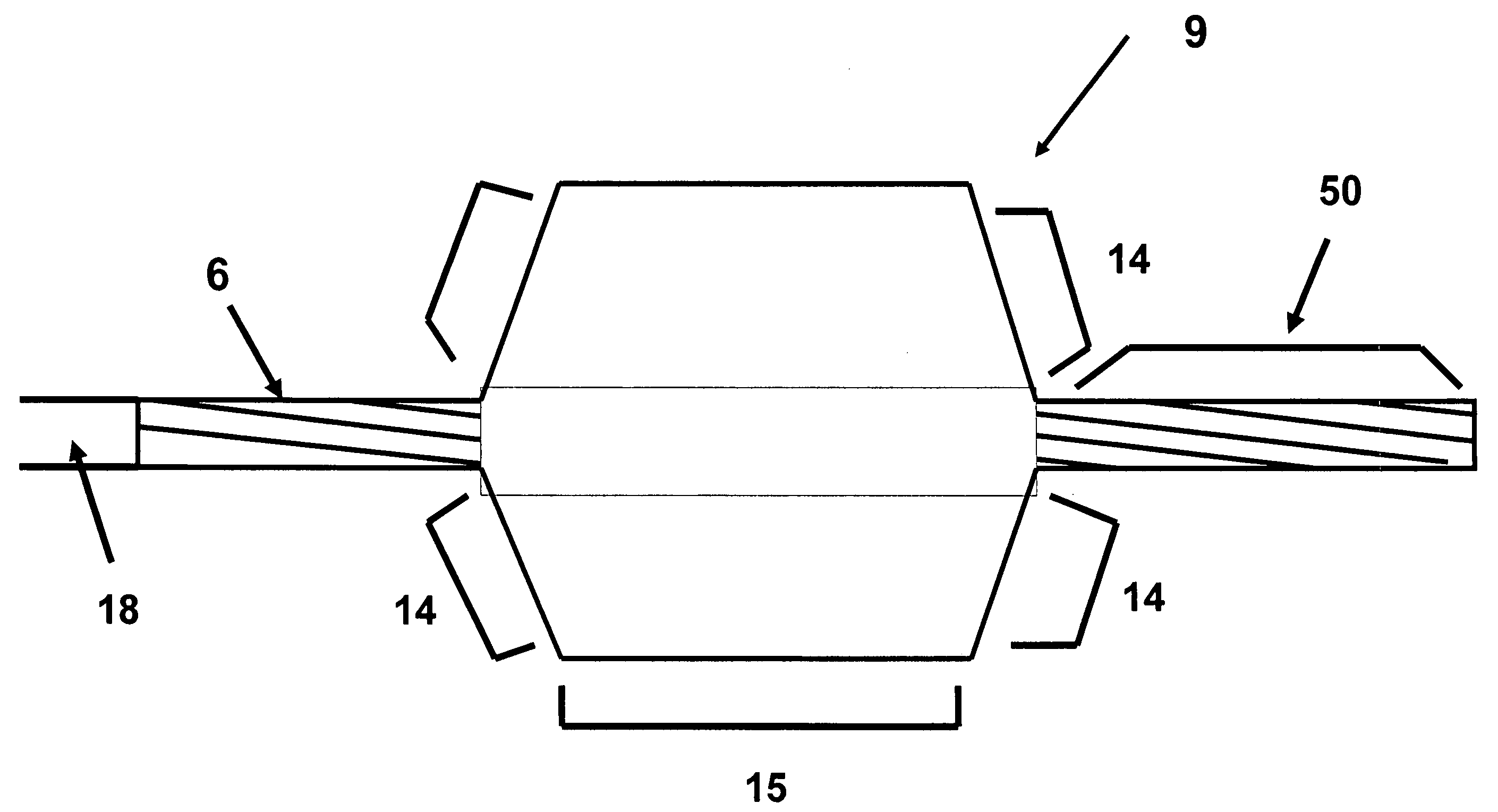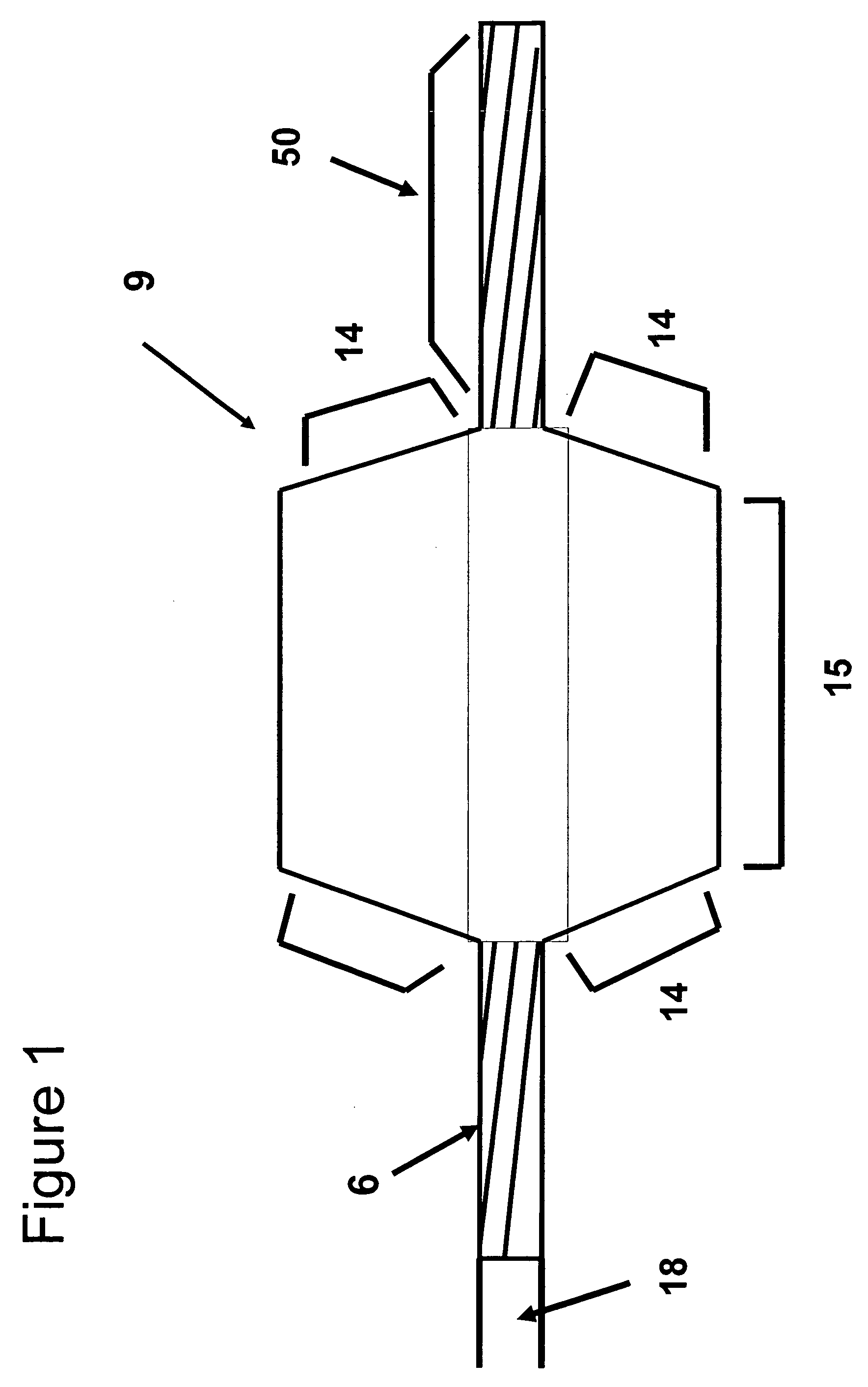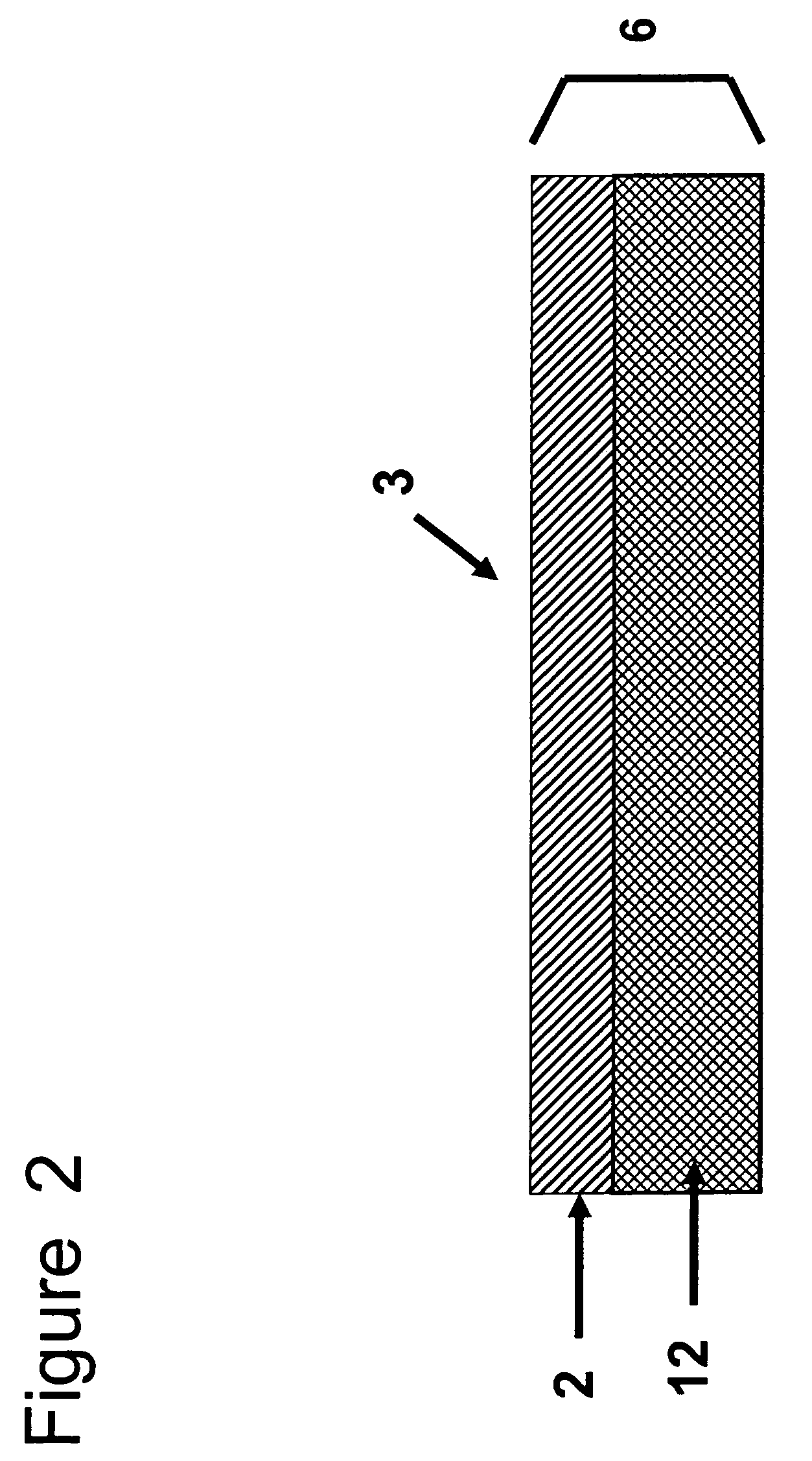Non-shortening wrapped balloon
a balloon and non-shortening technology, applied in the field of balloon catheters, can solve the problems of compensation for foreshortening and unreliable placement of balloons in vessels, and achieve the effects of increasing burst pressure, increasing burst pressure, and reducing the thickness of the film
- Summary
- Abstract
- Description
- Claims
- Application Information
AI Technical Summary
Benefits of technology
Problems solved by technology
Method used
Image
Examples
example 1
[0044]The ePTFE membrane used to make the composite film was made in accordance with the teaching in U.S. Pat. No. 5,476,589 to Bacino. Specifically, the ePTFE membrane was longitudinally expanded to a ratio of 55 to 1 and transversely expanded approximately 2.25 to 1, to produce a thin strong membrane with fibrils oriented substantially in the longitudinal direction, and a mass of approximately 3.5 g / m̂2 and a thickness of approximately 6.5 micrometers.
[0045]The composite film was made by using a saturation coating process whereby a solution of Tecothane TT-1085A polyurethane and tetrahydrofuran (THF) was coated onto the ePTFE membrane using a wire-wound rod coating process. A 3% to 8% by weight solution of Tecothane TT-1085A polyurethane in THF was saturation coated onto the ePTFE membrane to produce a composite film with approximately equal amounts of Tecothane TT-1085A polyurethane on either side of the ePTFE membrane and a total polymer weight application of approximately 50% t...
example 2
[0046]A mechanically balanced composite film was made by using a wire-wound rod coating process whereby a solution of Tecothane TT-1085A polyurethane and tetrahydrofuran (THF) was coated onto an ePTFE membrane. The ePTFE membrane used to make the composite film was made in accordance with the teachings of U.S. patent application Ser. No. 11 / 334,243. Specifically, the ePTFE membrane was longitudinally expanded to a ratio of 15 to 1 and transversely expanded approximately 28 to 1, to produce a thin strong membrane with a mass of approximately 3.5 g / m2 and a thickness of approximately 8 micrometers. A 3% to 8% by weight solution of Tecothane TT-1085A polyurethane in THF was coated onto the ePTFE membrane to produce a composite film with Tecothane TT-1085A polyurethane on one side of the ePTFE membrane and throughout the ePTFE membrane, and a total polymer weight application of approximately 40% to 60% of the total final composite film weight.
example 3
[0047]A mechanically balanced composite film was made by using a saturation coating process whereby a solution of Tecothane TT-1085A polyurethane and tetrahydrofuran (THF) was coated onto an ePTFE membrane using a wire-wound rod coating process. The ePTFE membrane used to make the composite film was made in accordance with the teachings in Example (2). Specifically, the ePTFE membrane was longitudinally expanded to a ratio of 15 to 1 and transversely expanded approximately 28 to 1, to produce a thin strong membrane with an mass of approximately 3.1 g / m2 and a thickness of approximately 8 micrometers. A 3% to 8% by weight solution of Tecothane TT-1085A polyurethane in THF was saturation coated onto the ePTFE membrane to produce a composite film with approximately equal amounts of Tecothane TT-1085A polyurethane on either side of the ePTFE membrane and a total polymer weight application of approximately 40% to 50% of the total final composite film weight.
PUM
 Login to View More
Login to View More Abstract
Description
Claims
Application Information
 Login to View More
Login to View More - R&D
- Intellectual Property
- Life Sciences
- Materials
- Tech Scout
- Unparalleled Data Quality
- Higher Quality Content
- 60% Fewer Hallucinations
Browse by: Latest US Patents, China's latest patents, Technical Efficacy Thesaurus, Application Domain, Technology Topic, Popular Technical Reports.
© 2025 PatSnap. All rights reserved.Legal|Privacy policy|Modern Slavery Act Transparency Statement|Sitemap|About US| Contact US: help@patsnap.com



